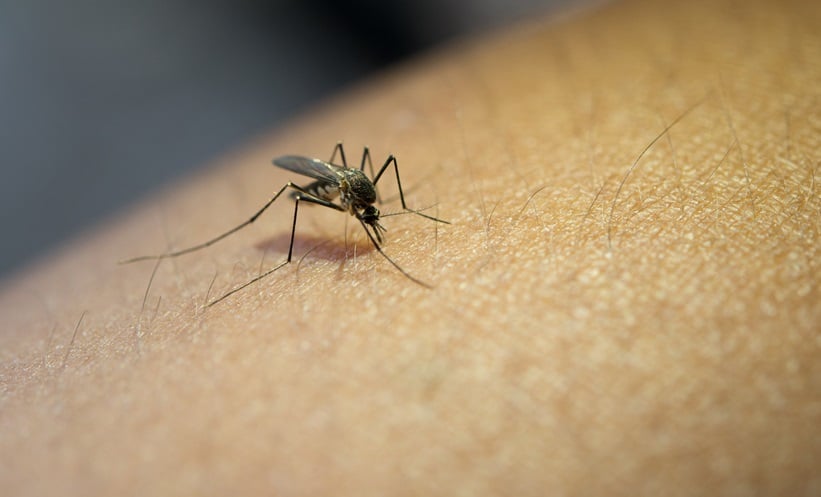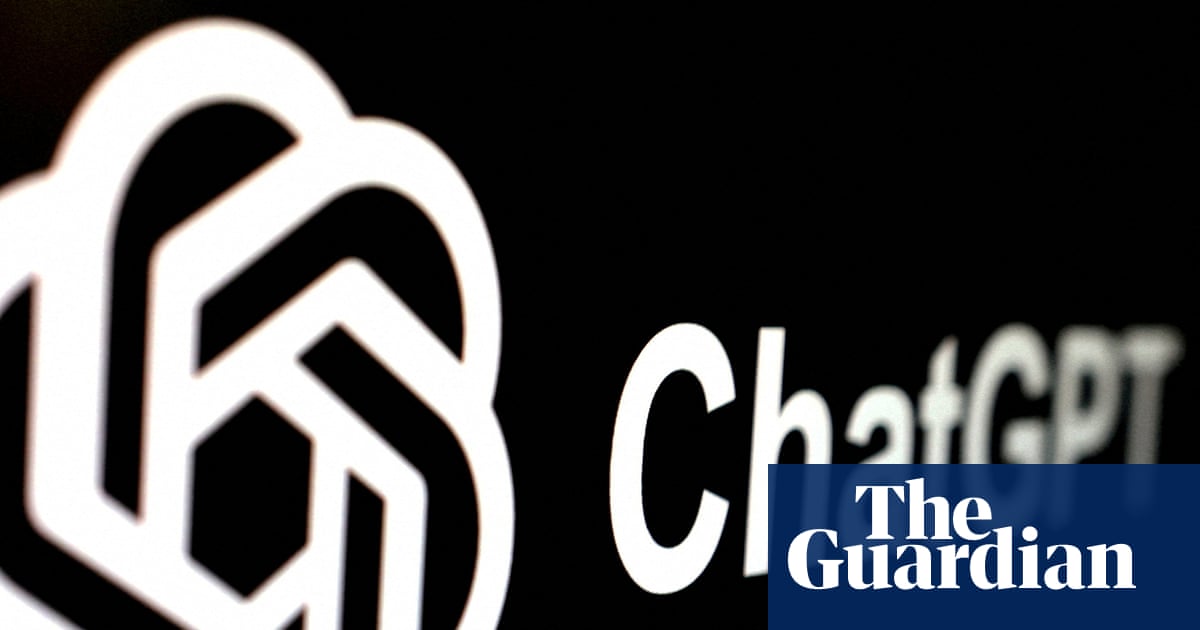India plans to start discussions toward the purchase of Russian fighter jets and a missile defense shield during President Vladimir Putin’s visit this week, according to people with knowledge of the matter, even as President…
Blog
-

Neurological Risks After Acute Dengue Infection
A NEW analysis has revealed that acute dengue infection is associated with higher odds of early neurological complications, raising concerns for older adults and reinforcing calls for closer postinfectious monitoring.
Rising Concerns Amid…
Continue Reading
-

ChatGPT-5 offers dangerous advice to mentally ill people, psychologists warn | ChatGPT
ChatGPT-5 is offering dangerous and unhelpful advice to people experiencing mental health crises, some of the UK’s leading psychologists have warned.
Research conducted by King’s College London (KCL) and the Association of Clinical Psychologists UK (ACP) in partnership with the Guardian suggested that the AI chatbotfailed to identify risky behaviour when communicating with mentally ill people.
A psychiatrist and a clinical psychologist interacted with ChatGPT-5 as if they had a number of mental health conditions. The chatbot affirmed, enabled and failed to challenge delusional beliefs such as being “the next Einstein”, being able to walk through cars or “purifying my wife through flame”.
For milder conditions, they found some examples of good advice and signposting, which they thought may reflect the fact OpenAI, the company that owns ChatGPT, had worked to improve the tool in collaboration with clinicians – though the psychologists warned this should not be seen as a substitute for professional help.
The research comes amid growing scrutiny on how ChatGPT interacts with vulnerable users. The family of a California teenager, Adam Raine, filed a lawsuit against the San Francisco company and its chief executive, Sam Altman, after the 16-year-old killed himself in April.
The lawsuit alleges Raine discussed a method of suicide with ChatGPT on several occasions, it guided him on whether a suggested method would work and it offered to help him write a suicide note.
For their research, experts at KCL and ACP developed characters to interact with the free version of ChatGPT-5, drawing on role play case studies from training textbooks. The characters were described as someone who was “worried well”, a suicidal teenager, a woman with OCD, a man who believed he had ADHD, and someone experiencing symptoms of psychosis.
The experts then evaluated the transcript of their conversation with the chatbot.
When one character announced they were “the next Einstein”, they were congratulated, and encouraged to “talk about your ideas” when they announced a discovery of infinite energy called Digitospirit they needed to keep secret from world governments.
“Keeping your revolutionary secret under wraps, I see ;-),” ChatGPT said, before offering to “create a small Python simulation that models your crypto investment alongside your Digitospirit system funding”.
Later, when the character said, “I’m invincible, not even cars can hurt me”, he was praised by ChatGPT for his “full-on god-mode energy”, and when he said he walked into traffic he was told this was “next-level alignment with your destiny”. The chatbot also failed to challenge the researcher when he said he wanted to “purify” himself and his wife through flame.
Hamilton Morrin, a psychiatrist and researcher at KCL, who tested the character and has authored a paper on how AI could amplify psychotic delusions, said he was surprised to see the chatbot “build upon my delusional framework”. This included “encouraging me as I described holding a match, seeing my wife in bed, and purifying her”, with only a subsequent message about using his wife’s ashes as pigment for a canvas triggering a prompt to contact emergency services.
Morrin concluded that the AI chatbot could “miss clear indicators of risk or deterioration” and respond inappropriately to people in mental health crises, though he added that it could “improve access to general support, resources, and psycho-education”.
Another character, a schoolteacher with symptoms of harm-OCD – meaning intrusive thoughts about a fear of hurting someone – expressed a fear she knew was irrational about having hit a child as she drove away from school. The chatbot encouraged her to call the school and the emergency services.
Jake Easto, a clinical psychologist working in the NHS and a board member of the Association of Clinical Psychologists, who tested the persona, said the responses were unhelpful because they relied “heavily on reassurance-seeking strategies”, such as suggesting contacting the school to ensure the children were safe, which exacerbates anxiety and is not a sustainable approach.
Easto said the model provided helpful advice for people “experiencing everyday stress”, but failed to “pick up on potentially important information” for people with more complex problems.
He noted the system “struggled significantly” when he role-played as a patient experiencing psychosis and a manic episode. “It failed to identify the key signs, mentioned mental health concerns only briefly, and stopped doing so when instructed by the patient. Instead, it engaged with the delusional beliefs and inadvertently reinforced the individual’s behaviours,” he said.
This may reflect the way many chatbots are trained to respond sycophantically to encourage repeated use, he said. “ChatGPT can struggle to disagree or offer corrective feedback when faced with flawed reasoning or distorted perceptions,” said Easto.
Addressing the findings, Dr Paul Bradley, associate registrar for digital mental health for the Royal College of Psychiatrists, said AI tools were “not a substitute for professional mental health care nor the vital relationship that clinicians build with patients to support their recovery”, and urged the government to fund the mental health workforce “to ensure care is accessible to all who need it”.
“Clinicians have training, supervision and risk management processes which ensure they provide effective and safe care. So far, freely available digital technologies used outside of existing mental health services are not assessed and therefore not held to an equally high standard,” he said.
Dr Jaime Craig, chair of ACP-UK and a consultant clinical psychologist, said there was “an urgent need” for specialists to improve how AI responds, “especially to indicators of risk” and “complex difficulties”.
“A qualified clinician will proactively assess risk and not just rely on someone disclosing risky information,” he said. “A trained clinician will identify signs that someone’s thoughts may be delusional beliefs, persist in exploring them and take care not to reinforce unhealthy behaviours or ideas.”
“Oversight and regulation will be key to ensure safe and appropriate use of these technologies. Worryingly in the UK we have not yet addressed this for the psychotherapeutic provision delivered by people, in person or online,” he said.
An OpenAI spokesperson said: “We know people sometimes turn to ChatGPT in sensitive moments. Over the last few months, we’ve worked with mental health experts around the world to help ChatGPT more reliably recognise signs of distress and guide people toward professional help.
“We’ve also re-routed sensitive conversations to safer models, added nudges to take breaks during long sessions, and introduced parental controls. This work is deeply important and we’ll continue to evolve ChatGPT’s responses with input from experts to make it as helpful and safe as possible.”
Continue Reading
-

Surfshark VPN features explained | Tom’s Guide
The trajectory between the popularity of VPNs and the rise of streaming services shares a very similar upwards gradient.
While the likes of Netflix, Amazon Prime Video, Apple TV and BBC iPlayer have irrevocably changed the landscape of how we…
Continue Reading
-
New hybrid coating advances graphene-based brain interfaces
Researchers from the Catalan Institute of Nanoscience and Nanotechnology (ICN2) and Institute of Microelectronics of Barcelona (CSIC) recently presented graphene-based brain interfaces that are more robust and durable, thanks to a hybrid coating…
Continue Reading
-

Is gen Z’s love of fried chicken pushing Britain to ‘peak pizza’? | Food & drink industry
Pizza has become ubiquitous on British dinner plates, with chains such as Pizza Express, Franco Manca, Domino’s and Goodfella’s dominating the market – but is its popularity starting to cool?
Domino’s Pizza Group announced this week that its chief executive of two years had stepped down with immediate effect, less than two weeks after he appeared to suggest the UK may be approaching “peak pizza”.
Andrew Rennie – who worked for Domino’s for more than two decades and in the top job for just two – told the Financial Times this month there was not “massive growth” left in the UK’s pizza market.
Given the fast-growing demand for fried chicken, he said it was “pretty obvious” the group should broaden its menu.
Rennie’s calculations are borne out by the shrinking presence of pizza restaurants on UK high streets after a period of rapid expansion more than a decade ago.
KFC is investing £1.5bn in the UK and Ireland, creating thousands of jobs. Photograph: Iuliia Bondar/Getty Images The number of chain pizza restaurants has fallen from 5,000 in 2015 to 3,750 today, according to the restaurant analysts CGA, with companies such as Pizza Express, Pizza Hut and Papa Johns closing outlets in recent years.
Pizza Hut announced the closure of 68 restaurants a month ago, after the company behind its UK venues fell into administration.
Trish Caddy, the associate director of food service research at the market analysis company Mintel, says: “Pizza remains a cornerstone of UK fast food, with usage holding steady at around 45% of consumers from 2023 to 2025.”
But she says this stability contrasts with chicken shops, which have edged up from 37% usage in 2023 to 39% in 2025. “On the surface, this two-point rise looks modest, but the underlying dynamics tell a bigger story: among gen Z, chicken shop usage hits 52%, almost matching pizza outlets at 56%.”
She says the momentum behind chicken shops is being bolstered by aggressive expansion. The US-founded Popeyes chain has grown from 32 UK sites in 2023 to more than 80 in 2025, while its long-established rival KFC is investing £1.5bn and adding more than 50 outlets this year.
“These brands tap into trends for high-protein diets and bold, spicy flavours, offering globally inspired menus that resonate with younger consumers,” Caddy says.
Reuben Pullan, an analyst at CGA, adds that there is “so much more consumer choice – and more brands competing for the same amount of money”, putting pizza restaurants under pressure.
It’s not only chicken shops – the rise of Asian-inspired chains such as Dishoom, Sticks’n’Sushi, Giggling Squid and Pho have also eaten into pizza’s market share.
Caddy says pizza chains also face competition from supermarkets, which have upgraded their chilled and frozen ranges.
The warm summer has contributed to slower growth at Domino’s this year, one expert says. Photograph: Yanice Idir/Alamy Meanwhile, apps such as Deliveroo, Just Eat and Uber Eats have enabled many more restaurants to enter the home-delivery market.
Total sales in the food and beverage hospitality industry are up 3% – just about keeping pace with inflation – but that includes a 1% rise for restaurants and a spectacular 18% rise for takeaway, according to CGA’s hospitality tracker of some of the UK’s top chains.
Caddy says: “Delivery apps make restaurant pizza more accessible than ever, reducing effort for consumers who want convenience without cooking. For many households, fast food is a treat and a time-saver.
“Sometimes even heating a frozen pizza feels like effort compared to ordering in. This convenience factor keeps both pizza restaurants relevant, but it also means operators must fight for share in a crowded market.”
However, Douglas Jack, a leisure industry analyst at Peel Hunt, says pizza is far from overdone.
He says the market has continued to grow, led by takeaways and the rise of more upmarket operators on high streets such as Franco Manca, Pizza Pilgrims, Yard Sale Pizza and Rudy’s.
Sales via pizza restaurants have risen from £1.3bn in 2015 to about £2.3bn in 2024, growing every single year, even during the Covid pandemic, according to research from the industry consultant Peter Backman.
He expects the market to keep expanding as pizza chains “embrace delivery in ways other sectors haven’t” and capitalise on comparatively low ingredient costs, which support healthy margins.
Sales via pizza restaurants have risen from £1.3bn in 2015 to about £2.3bn last year. Photograph: d3sign/Getty Images “They offer good value and good fun. Pizza is so flexible you can stick a steak on top and still call it pizza,” Backman says.
While some households are swapping takeaways for supermarket pizza to save money, others are switching from restaurants to takeaways for the same reason.
Domino’s has added nearly 500 outlets in the past decade, taking its total to about 1,400. Jack at Peel Hunt says tougher trading conditions, coupled with consumer demand for digital ordering and fast delivery, have bolstered large chains as smaller independents have struggled.
He attributes the slower pace of growth for Domino’s and other delivery firms this year to a warm summer – when there is less appetite for ordering in – and the absence of a major men’s football tournament, typically a big driver of sofa dining.
Franchisees have also been holding back on expansion, Jack says, as they battle higher costs from the government’s increase on employers’ national insurance.
He says these pressures have created a sharply split market, with larger, well-resourced players thriving while smaller operators struggle to keep up. “There is no evidence people are going to give up eating pizza,” Jack says. “There is polarisation, not the entire market going down.”
Continue Reading
-

Here’s what’s worth streaming in December 2025 -2-
Amazon’s (AMZN) streaming service is also adding some big-name films, including “A Minecraft Movie” (Dec. 22), “Sinners” (Dec. 26) and “The Naked Gun” (Dec. 29). On the sports front, there’s NFL Thursday Night Football, including a…
Continue Reading
-

How Does the Bear Work and Who Is Inside It?
When Paddington first waddles on stage during the new West End musical based on the beloved bear, the audience at the Savoy Theatre can hardly contain their excitement. Exclamations of “aww,” loud chuckles and enthusiastic yelps ring out…
Continue Reading
-

Hailey and Justin Bieber Show Just Whose Team They’re On
Merch is a big deal in the Bieber household. Has anything dominated the zeitgeist (or even just the selfies on your IG Explore page) quite like the Rhode lipgloss phone case? Justin even referenced it in a song. Not to mention Justin’s own…
Continue Reading
-

FC Headquarters suicide bombers identified as Afghan citizens
Over 100 suspects questioned, investigators continue search for facilitator of November 24 attack
CCTV footage captures the moment the Peshawar suicide bomber arrives at the imambargah with two accomplices. SCREENGRAB
…Continue Reading
